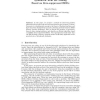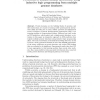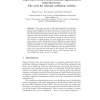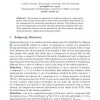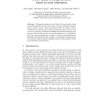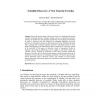98
Voted
DIS
2006
Springer
15 years 4 months ago
2006
Springer
In this paper, we propose a method for discovering hidden information from large-scale item set data based on the symmetry of items. Symmetry is a fundamental concept in the theory...
117
click to vote
DIS
2006
Springer
15 years 4 months ago
2006
Springer
The purpose of this paper is two-fold: First, we give efficient algorithms for answering itemset support queries for collections of itemsets from various representations of the fre...
110
click to vote
DIS
2006
Springer
15 years 4 months ago
2006
Springer
Protein domains are the building blocks of proteins, and their interactions are crucial in forming stable protein-protein interactions (PPI) and take part in many cellular processe...
DIS
2006
Springer
15 years 4 months ago
2006
Springer
This paper presents a full scaled application of induction trees for non-classificatory purposes. The grown trees are used for highlighting regional differences in the women's...
DIS
2006
Springer
15 years 4 months ago
2006
Springer
In this paper, we introduce a sectorial episode of the form C r, where C is a set of events and r is an event. The sectorial episode C r means that every event of C is followed b...
104
click to vote
DIS
2006
Springer
15 years 4 months ago
2006
Springer
Parametric Embedding (PE) has recently been proposed as a general-purpose algorithm for class visualisation. It takes class posteriors produced by a mixture-based clustering algori...
119
Voted
DIS
2006
Springer
15 years 4 months ago
2006
Springer
Abstract. We propose an approach to subgroup discovery using distribution rules (a kind of association rules with a probability distribution on the consequent) for numerical proper...
72
Voted
DIS
2006
Springer
15 years 4 months ago
2006
Springer
This paper introduces a new family of string classifiers based on local relatedness. We use three types of local relatedness measurements, namely, longest common substrings (LCStr&...
DIS
2006
Springer
15 years 4 months ago
2006
Springer
In supervised machine learning, variable ranking aims at sorting the input variables according to their relevance w.r.t. an output variable. In this paper, we propose a new relevan...
100
Voted
DIS
2006
Springer
15 years 4 months ago
2006
Springer
One of the primary goals in discovery science is to understand the human scientific reasoning processes. Despite sporadic success of automated discovery systems, few studies have s...
